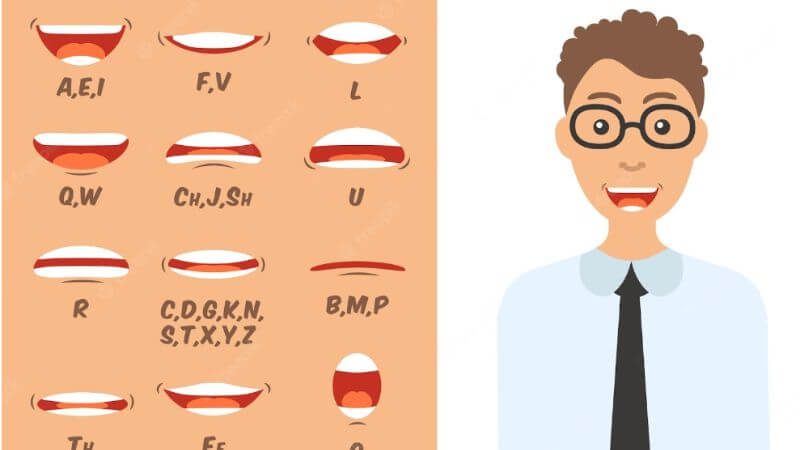
The pursuit of impeccable English pronunciation is an incredibly difficult undertaking that requires careful and precise movements of both the mouth and tongue. In order to achieve the desired level of proficiency, it is crucial to have a comprehensive understanding of the role of mouth and tongue movements. This article aims to explore the ways in which learners can utilize these movements to create the correct sounds, thereby improving their overall pronunciation skills. In order to produce accurate English pronunciation, it is essential that learners pay close attention to the intricate movements of their mouth and tongue.
Merely pronouncing words correctly isn’t enough when it comes to mastering how to speak English fluently. It’s equally vital to adopt the proper mouth and tongue movements for natural-sounding speech. With around 50 distinct sounds in the English language, each requiring unique mouth and tongue configurations, it becomes essential to include these elements in your pronunciation practice. Utilize exercises such as tongue twisters, reading aloud, making mouth sounds, and partnered reading, which all serve to effectively guide learners in proper mouth and tongue movement usage, taking you one step closer to fluent English.
There are many mouth and tongue movements, but five are particularly prevalent in English pronunciation. These are lip rounding, tongue retraction, tongue tip retraction, lip compression, and lip rounding. Lip rounding entails flattening the lips, helping to produce the /oo/ sound in words like “food,” “wood,” and “wooden.” Tongue retraction is pulling the middle of the tongue to the back of the mouth, facilitating the production of the /u/ sound in “book,” “look,” and “tuck.” Tongue tip retraction involves pulling the tip of the tongue to the back of the mouth, making the /ə/ sound in “pen,” “pencil,” and “woman.”
Learners aiming to enhance their pronunciation must endeavor to engage in exercises that entail the manipulation of their mouth and tongue. It is fundamental to commence pronunciation exercises that involve the utilization of mouth and tongue movements. By doing so, learners can accustom themselves to using the appropriate motions when articulating sounds. There are diverse kinds of pronunciation exercises that learners can try, such as the utterance of tongue twisters, enunciation of written words, producing various mouth sounds, and reading in pairs. All these exercises can assist learners in honing their proficiency in using mouth and tongue movements, thereby improving their pronunciation skills.
Creating associations between sounds and their corresponding mouth and tongue movements is another crucial technique. By doing so, learners can better recollect when and how to use the correct movements, thereby simplifying the process of utilizing the proper movements during pronunciation practice. It is a valuable method that can help learners improve their pronunciation skills.
Understanding how to use mouth and tongue movements is beneficial to learners as it maximizes their pronunciation practice and improves their pronunciation. With knowledge of the appropriate movements, learners can correctly pronounce new sounds, aiding them in pronouncing new words correctly and sounding more natural. This is particularly advantageous during English conversations or when reading out loud in English. When learners use the right movements, they can make their pronunciation sound more natural since they will be moving their mouth and tongue in the same way as native English speakers. Using the right movements will also eliminate any speech irregularities that may make their English sound unnatural, allowing learners to sound like native English speakers.
There are some other things that learners can do to help them remember and use mouth and tongue movements.
– When learners practice pronunciation exercises, they can take the time to think about the movements that are required for each sound.
– When learners make links between sounds and their mouth and tongue movements, they can write down the connection on paper.
– When learners are reading out loud, they can pay attention to the movements of their mouth and tongue.
– The fastest way is to use pronunciation apps or programs, favorably programs include an accent coach. One of the most popular apps is ChatterFox.
Learners have access to a myriad of resources to enhance their English pronunciation. Pronunciation guides are an excellent starting point as they typically explain each of the various mouth and tongue movements used in English. Learners can also attempt pronunciation exercises and games that can be found online to help them understand and practice the mouth and tongue movements. Finally, watching videos of native English speakers and observing their mouth and tongue movements can be a helpful way to see the movements in action.